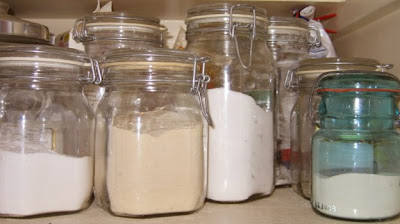Recipe for Famous Gluten-free Scones

Among my friends, family, and co-workers I am famous for my scones. I get frequent requests for the recipe. People are usually surprised to hear that it's wheat-free and gluten-free, it tastes so much like "regular." Well here it is! The Best Gluten-free Scone Recipe Heat oven to 425 degrees. Mix together in a large bowl: 2 cups Gluten-free Pastry Flour 1/3 cup sugar 1 Tbsp baking powder (make sure it's GF) 1/4 tsp baking soda 1/2 tsp salt plus a pinch 1/4 tsp xanthan gum (if it's not included in your GF flour mix) Cut into pieces and drop in: 6 Tbsp cold unsalted butter Cut the butter in with a pastry blender or two knives, coating the pieces with flour as you go, until the largest pieces of butter are pea-sized. Keep this mixture cold, chilling it in the refrigerator if the butter starts to soften. Stir in: 1/2 cup chopped nuts (optional) and/or 1/2 cup dried fruit (optional) Whisk together in a separate bowl: 3/4 cup




